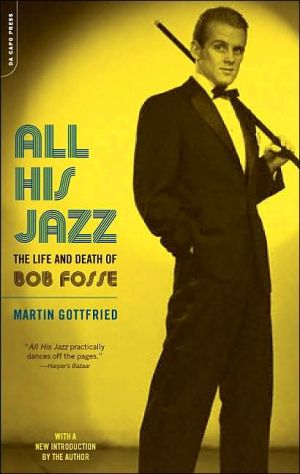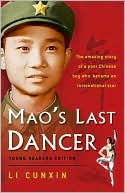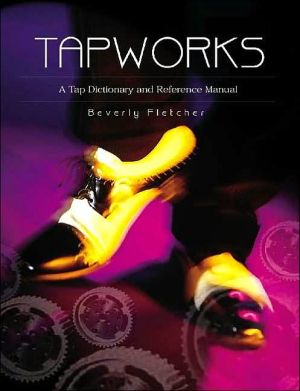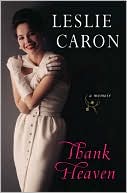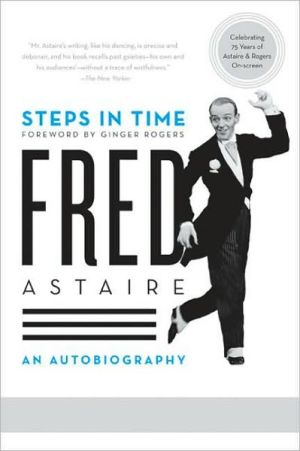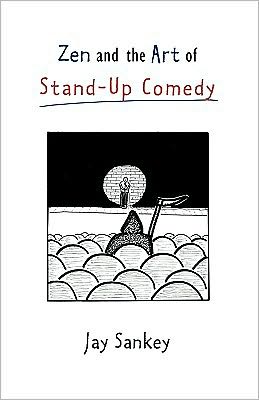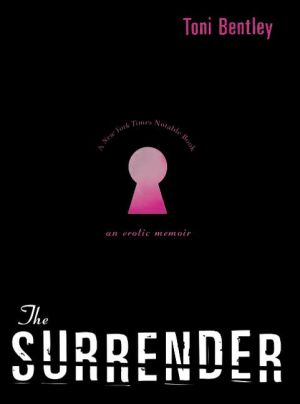All His Jazz
Bob Fosse (19271987), the director and choreographer of Chicago and Sweet Charity, has never been more popular than he is right now. Here is the less-publicized side of his story-his surprising ascent from the world of sleazy Chicago strip joints to the glitter of Broadway. A legend's memory is preserved in this eloquent biography.
Search in google:
"All His Jazz practically dances off the pages."Harper's Bazaar Publishers Weekly Former Women's Wear Daily drama critic Gottfried traces the life and career of director/choreographer Fosse (1927-1987), who rose to fame with The Pajama Game , Damn Yankees , Sweet Charity and other shows and films. Fosse's life was full of conflict--a desire (unfulfilled) to star as performer as well as director, painful personal relationships, obsession with sex and a preoccupation with death that led him to recount the details of his heart attack in the movie All That Jazz . Basing his text on interviews, Gottfried examines Fosse's numerous unsatisfactory marriages and love affairs, and his tense dealings with collaborators and colleagues, revealing much about the backstage intrigues and vicissitudes of show business, but offering little of substance about either the shows themselves or Fosse's talent. Photos not seen by PW. (Nov.)
THE CHICAGO MAN'S LIFE AFTER DEATH\ Bob Fosse would have loved it. Decades after his death, this cynical and mordant man in black had the first blockbuster hit of his life. The hit, moreover, was a revival of Chicago, a stage musical that he had never wanted to do in the first place and had done only as a guilty favor for the wife he loved but had forsaken—Gwen Verdon. It was also a show he had staged in a mood even blacker than his usual, for he was suffering post-operative depression after open-heart surgery. In that respect, at least, the tough and ironic Chicago was a pure expression of this profoundly talented, self-loathing, and brutally morbid song and dance man.\ When first produced in 1975, Chicago received mixed reviews and barely eked out a two-year run. Twenty years later Broadway, once the proud birthplace of American musical theater, had become its mausoleum. Yet even as producers were scavenging for old shows to revise, Chicago was deemed worthy of only a four-performance staging in a New York series called Encores! Great Musicals in Concert.\ With the play's opening number, however, audiences were electrified. Stripped of scenery and performed with actors in black costumes before an on-stage orchestra, Chicago was set free to bare its nasty power. Indeed, the production provided a split picture of Fosse. One revealed his self-image in the bitterly trashy, show business glitter of Chicago as first produced. The other picture reflected Bob Fosse as Ann Reinking chose to see him, a "touch-up" that presented her late lover and dance master as choreographing for her alone.\ Gwen Verdon had been the original model for Bob Fosse's choreography. He designed dances especially for her in shows like Redhead, Damn Yankees, and Sweet Charity. Reinking, who succeeded her as his mistress (he never divorced Verdon), was also her replacement as dance model. He used Reinking's body to perfect the grinding, swivel-hipped style that evolved in the 1972 Pippin and the 1979 movie All That Jazz.\ By then, however, Bob Fosse's enthusiasm for dance numbers had waned. Indeed, even as early as 1966's Sweet Charity he was showing greater interest in musical staging than in choreography. That show's "Hey, Big Spender," for instance, is usually taken for a dance number when in fact it has no dance steps. Such choreographic direction culminated in Fosse's brilliant film Cabaret, with its thorough line of musical staging-and no dance numbers at all.\ Such a development had to be painful for a dancer like Reinking, but she tried to have the last word. Nine years after Fosse's death, when she was engaged to play Roxie Hart in the 1996 concert version of Chicago-a show that he had made virtually danceless—Reinking revised history by creating additional choreography "in the style of Bob Fosse." That translated as a mimicry of the style he had suited to her, and it resulted in a choreography of cliches—pelvic grinds, tipped derbies, and Fosse lookalikes—often effective but inevitably repetitive and ultimately a travesty of the original style.\ The damage was not crucial and the concert version of Chicago, with its wonderful overall direction by Walter Bobbie, went on to spectacular and deserved success. Even after the release of Chicago, the movie that won the 2002 Academy Award, the Broadway revival remained popular, continuing into an eighth year. Indeed, it was only the enormously successful revival of the stage show that finally made the movie of Chicago possible. It was a movie twenty years not in the making but in the failing to make—casting proposals over the years ranged from Goldie Hawn to Bette Midler, from Kevin Kline to Kevin Spacey, and from Madonna to Britney Spears. Meanwhile, Fosse had been treated to yet a second posthumous hit.\ This man, who was self-effacing in the extreme (always giving his full name because he thought otherwise he'd be asked, "Bob who?") would have been astonished that he was the subject of a full-length staged tribute that opened on Broadway in 1999, won the Tony Award as the season's best musical, and ran for 1,093 performances. Called simply Fosse, it played in the theater next door to Chicago, making 44th Street the eminent domain of the dead Bob Fosse. He would have cheerfully ridiculed the idea.\ If Ann Reinking had tried to make Chicago choreographically a Bob Fosse show in her own image, then the theatrical tribute Fosse was an even weirder exercise in dancer devotion. It involved both of his widows, the two keepers of the flame, in partnership-Ann Reinking as choreographer and Gwen Verdon as artistic advisor. Fosse, being a retrospective, had no place for dances that were merely "in the style of Fosse." Taking another approach to post-mortem, Verdon and Reinking managed in the process to undermine their man's most earnest concern-that he be recognized, first, for his masterful achievements as a film director. They instead memorialized him for themselves, as a choreographer, and that is as he tends to be remembered. It surely would have given him another black laugh.\ The dances in Fosse were drawn from the early "Steam Heat" (The Pajama Game) through Fosse's mid-career television work, which was assorted and often striking, to his marvelous later work "Liza with a 'Z'" and "All That Jazz." Verdon seems to have ensured that none of her signature numbers were danced by anyone else, and so there was no "Whatever Lola Wants" (Damn Yankees) or "I'm a Brass Band" (Sweet Charity), while in eerie underscore, she found a way to win Fosse's personal approval of her decisions. As director Richard Maltby, Jr., put it, "Gwen believed she was channeling Bob."\ Gwen Verdon died soon afterward, on October 18, 2000, at the age of 75. As for her co-stars from the original production of Chicago, Jerry Orbach (Billy Flynn) went on to a long run in television's Law and Order while Barney Martin ("Mr. Cellophane") spent six years in Seinfeld as Jerry's father. Chita Rivera, the original Velma Kelly, continued to star on Broadway and, for old time's sake, played a bit part in Chicago the movie. This turned out to be the truest Fosse salute of all, in spirit much closer to his original show than the stage revival. It is also more appropriate, being in cinematic form, and seems to honor the look and style of his Cabaret film.\ The musical numbers (John Kander and Fred Ebb provided the vivid songs for both Cabaret and Chicago), are once again "justified." That is, songs are sung only where songs would be sung in real life—specifically, on a night club stage—never on a street or in a room, or to another character. In the Chicago movie, just as in Cabaret, the result is a picture that does not at all seem like a "musical," and the revival's Reinking choreography is gone. As in the original stage production, the movie's only completely choreographed dance is the exhilarating finale, "The Hot Honey Rag," and it is performed step-for-step as Bob Fosse created it on Broadway. Other specific elements retained from Fosse's staging range from the sardonic singing (by the lawyer Billy Flynn in undershorts) of "Razzle Dazzle" to the replicated musical staging of "Mr. Cellophane."\ The resulting movie is a fit tribute to Bob Fosse because movies were his first and last love, and movie making was his pride-in his view, his greatest accomplishment. If Gwen Verdon and Ann Reinking strove to memorialize him strictly as a choreographer, Rob Marshall, another director-choreographer, made Chicago in a sense the final Fosse movie. Certainly it is the homage that Bob Fosse deserved.\ That all of this happened only after he died would have suited him just fine.\ Martin Gottfried, New York City, 2003
\ Publishers Weekly - Publisher's Weekly\ Former Women's Wear Daily drama critic Gottfried traces the life and career of director/choreographer Fosse (1927-1987), who rose to fame with The Pajama Game , Damn Yankees , Sweet Charity and other shows and films. Fosse's life was full of conflict--a desire (unfulfilled) to star as performer as well as director, painful personal relationships, obsession with sex and a preoccupation with death that led him to recount the details of his heart attack in the movie All That Jazz . Basing his text on interviews, Gottfried examines Fosse's numerous unsatisfactory marriages and love affairs, and his tense dealings with collaborators and colleagues, revealing much about the backstage intrigues and vicissitudes of show business, but offering little of substance about either the shows themselves or Fosse's talent. Photos not seen by PW. (Nov.)\ \ \ \ \ Library JournalDrama critic Gottfried, author of Broadway Musicals (Abrams, 1989), brings a wealth of Broadway lore to his biography of choreographer/director Fosse, who made a lasting impact on the dancing style of Broadway musicals. Fosse was a driving perfectionist who had such mega-hits as Broadway's Sweet Charity and the movie version of Cabaret , and such colossal failures as the movie version of Sweet Charity and his last movie, Star 80 , which combines his lifelong obsessions, sex and death. Three times married, the last to Gwen Verdon with whom he had his string of Broadway hits, Fosse was a compulsive womanizer. He remains a likable character despite this and other negative traits which Gottfried does not soften. Gottfried gives a more complete psychological portrait of this contradictory man than Kevin Grubb's Razzle Dazzle ( LJ 10/1/89), which was heavily illustrated. Previewed in Prepub Alert, LJ 8/1/90.-- Marcia L. Perry, Berkshire Athenaeum, Pittsfield, Mass.\ \
